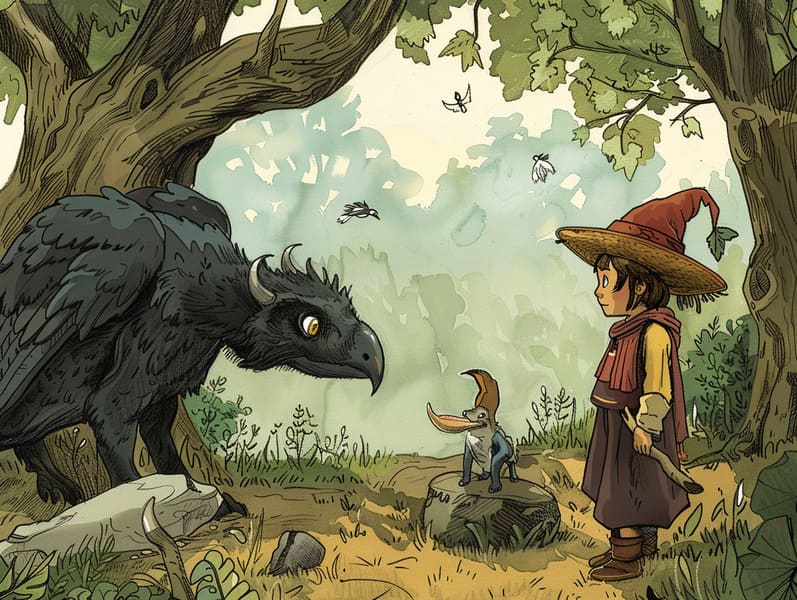
Evening is a sacred time for families. It’s a ritual to unwind, hug close, and partake in the charm of nighttime tales.
For years, sleep stories for kids have been a adored tradition, offering more than just a way to rest. They provide an occasion for connection, development, and fostering imagination.
The Power of Bedtime Stories
Nightly tales for children are more than just a way to wrap up the day. They play a vital role in a child’s growth and in fortifying the family relationship. Here’s why they matter:
1. Quality Time: Reading together at bedtime develops a special loving connection between families. It’s a moment of attachment that helps children feel secure and safe.
2. Language Skills: Experiencing stories helps children develop their communication skills. They understand new language, understand construction, and sharpen their auditory and grasping abilities.
3. Imagination and Creativity: Children's tales usher them to imaginary worlds, fostering creativity. They dream of characters, settings, and adventures, which sparks their creative thinking.
4. Emotional Intelligence: Bedtime narratives often present characters facing obstacles and states. These scripts help kids understand and address their own feelings, encouraging emotional skills.
5. Mental Development: Being read a tale helps children develop attention span, retention, and reasoning skills. They pick up to follow tales, remember facts, and deduce results.
Establishing Bedtime Story Rituals
Forming a sleep-time routine that features storytelling is straightforward and satisfying. Here’s how to turn it into a beloved part of your night-time practice:
1. Find a Cozy Place: Pick a relaxing place where you and your child can cuddle without noise. A snug bed or a comfortable reading nook works ideally.
2. Set a Regular Time: Determine a routine time each night for bedtime reading. Consistency helps children predict and makes the ritual easier to maintain.
3. Pick Age-Suitable Stories: Identify tales that are right for your child’s developmental stage. Toddlers might be engaged by simple books with straightforward tales, while elementary kids may prefer detailed stories with more complicated tales.
4. Bring the Story to Life: Try to the tale feel vivid by adding different character voices, adding audio effects, and having your child to join in. Ask things about the story to keep them listening.
5. Create a Calm Atmosphere: Adjust the lights, use calm voices, and create a calming environment to help your child calm down.
Locating the Best Bedtime Stories
There are many places where you can find great bedtime stories for children. Here are some places to check out:
1. Books for Children: Go to your nearby library or bookstore to find a large selection of bedtime stories for kids. Checking out the aisles together can be a wonderful activity that also lets children to find stories that interest them.
2. Web Resources: There are many web resources that offer free bedtime stories. Sites like Storyberries provide a variety of short stories for kids that you can download. These resources are great for finding new and unique stories without payment.
3. Apps and Audiobooks: For nights when you’re too fatigued to read, look into audiobooks or storytelling apps. These can provide a relaxing voice to read your child a story, ensuring they still get their bedtime story fix. Apps often offer engaging components that can involve them further.
4. Tailored Stories: Write your own stories reflecting your child’s experiences. Personalized stories can be very engaging and meaningful. You can include your child in the creation process, making them a part of the adventure.
Positive Aspects of Short Stories
Quick stories for bedtime are particularly great for bedtime. They provide all the good aspects of longer stories but are more compact, making them perfect for preparing for sleep before sleep. Here’s why short stories are a good choice:
1. Easy to Follow: Short stories are straightforward and clear for little ones to understand, even after a long day. They can swiftly grasp the story and enjoy the story without losing interest.
2. Instant Engagement: Compact stories rapidly engage children, keeping their engagement and creativity. This makes them suitable for keeping bedtime practices simple check here yet enjoyable.
3. Many Choices: Quick stories create for variety in your bedtime stories. You can select a different story each night, keeping the habit engaging and exciting for your child.
4. Time Management: For busy parents, concise narratives are a quick way to guarantee children still get their nightly dose of storytelling. They fit well into a packed schedule while still offering the full positives of a bedtime story.
The Comfort of "Read Me a Story"
The simple phrase, “Tell me a story,” can offer a world of magic for children. Saying yes to this request not only caters to a child’s need for attention and engagement but also builds lasting memories. Here’s why it’s special:
1. Tie: Storytelling to your child creates a deep emotional bond. It’s a time for closeness, sharing, and bonding.
2. Legacy: Forming a bedtime story custom creates a valued tradition that children anticipate every night. It’s a custom that can be transferred through generations.
3. Mutual Learning: As you read, you’ll notice your child’s progress and development. Their engagement, reactions, and understanding of the stories evolve, offering insights into their developing minds.
4. Protective Space: Bedtime stories provide a safe space for children to examine emotions, face fears, and find comfort in the recognizable presence of a parent.
In Closing
Sleep stories for kids are a important tool for supporting a child’s maturation and forming unforgettable memories of closeness.